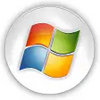Get heads up notifcations for your PC
Get heads up notifcations for your PC
Vote: (1 votes)
Program license: Free
Developer: fullphat
Version: 2.5.1
Works under: Windows
Vote:
Program license
(1 votes)
Free
Developer
Version
fullphat
2.5.1
Works under:
Windows
Pros
- Seamless and easy installation
- Open-source and free to use
- High customization options for notifications
- Offers API for developer integration
- Supports a variety of popular applications
Cons
- Integration with some applications can be complex
- Lacks automatic application detection for notifications
Enhanced Notification System for Windows
Snarl is a powerful notification system for Windows, aiming to enhance and streamline the way users receive alerts and updates on their computers. Presenting itself as an alternative to the native and somewhat limited Windows notifications, Snarl steps in to offer a more versatile and customizable experience.
Installation and Usability
Snarl is remarkably easy to install, boasting a straightforward setup process that welcomes users to its broad spectrum of features. Being an open-source project, it is not only freely accessible but also invites contributions from developers around the world, ensuring a continuously improving and evolving ecosystem.
Upon installation, Snarl immediately integrates with the system to provide enhanced notifications for various events like time changes or network status updates. This seamless integration marks an uptick in the utility of everyday notifications, making key information more visible and less disruptive.
Customization and Integration
One of the app's strong points is the incredible depth of customization it offers. Users can delve into Snarl's settings to modify both the behavior and the aesthetics of their notifications. This includes adjusting transparency, setting display durations, and selecting from a plethora of themes and plugins that can be easily downloaded and applied. The flexibility in personalization ensures that each user can tailor their notification experience to serve their specific needs and preferences.
Moreover, Snarl's API facilitates developers to integrate their applications with the notification system, extending the versatility of Snarl to a multitude of third-party applications. Notable applications like foobar, Pidgin, iTunes, and Spotify have already taken advantage of this feature.
App Integration Challenges
However, integrating Snarl with certain applications may require a bit more effort. Unlike its OS X counterpart, Growl, which can automatically detect and sync with supported applications, Snarl sometimes necessitates manual intervention, such as downloading an extension to connect with specific software like foobar. This, undoubtedly, adds an extra step for users, potentially becoming a hurdle for those who are not as tech-savvy or prefer a more plug-and-play type of experience.
Performance and Overall Assessment
Despite the minor integration setbacks, Snarl performs admirably as a notification system. It offers significant improvements over the default Windows notifications, providing a more informative and less intrusive user experience. The system runs smoothly, and notifications are delivered promptly without noticeable lag or impact on system resources.
In conclusion, Snarl stands out as a valuable tool for users looking to gain more control and customization over their notification experience on Windows. While there is room for improvement, particularly in application registration, its strengths in customization, open-source nature, and its capability to transform the mundane task of receiving alerts into a more pleasant and personalized experience, make Snarl a worthy addition to any Windows setup.
Pros
- Seamless and easy installation
- Open-source and free to use
- High customization options for notifications
- Offers API for developer integration
- Supports a variety of popular applications
Cons
- Integration with some applications can be complex
- Lacks automatic application detection for notifications




